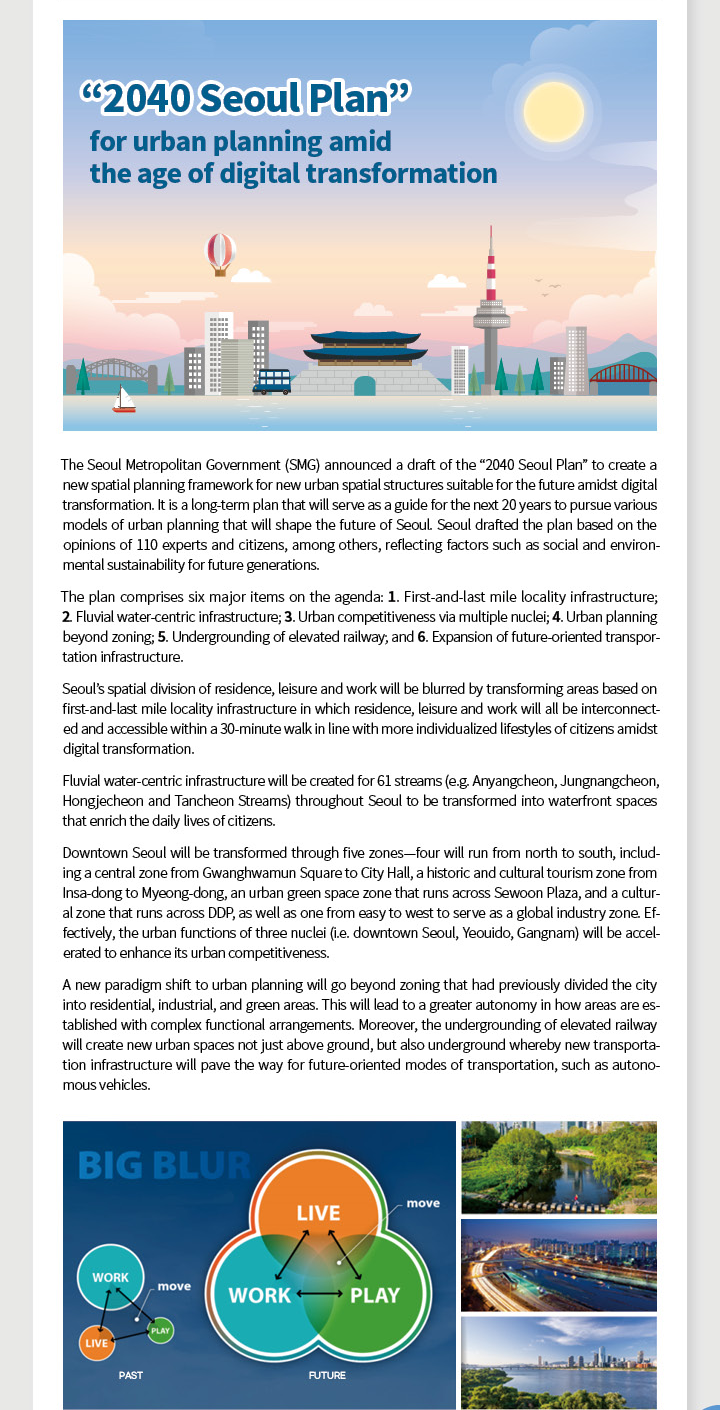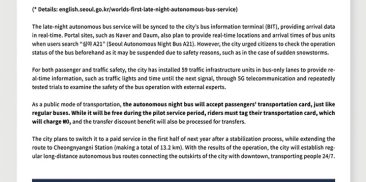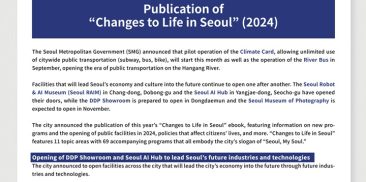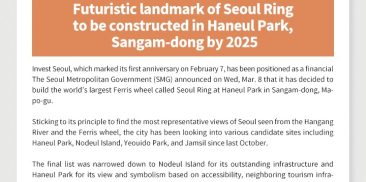特別号
-
2022 March (Vol.70)
-
特別号 登録日投稿者SMG ヒット406

Seoul 2040 Comprehensive Plan” for new urban spatial structures amidst digital transformation
The Seoul Metropolitan Government (SMG) announced a draft of the Seoul 2040 Comprehensive Plan to create a new spatial planning framework for new urban spatial structures suitable for the future amidst digital transformation. It is a long-term plan that will serve as a guide for the next 20 years to pursue various models of urban planning that will shape the future of Seoul. Seoul drafted the plan based on the opinions of 110 experts and citizens, among others, reflecting factors such as social and environmental sustainability for future generations. The plan comprises six major items on the agenda: 1. First-and-last mile locality infrastructure; 2. Fluvial water-centric infrastructure; 3. Urban competitiveness via multiple nuclei; 4. Urban planning beyond zoning; 5. Undergrounding of elevated railway; and 6. Expansion of future-oriented transportation infrastructure. Seoul’s spatial division of residence, leisure and work will be blurred by transforming areas based on first-and-last mile locality infrastructure in which residence, leisure and work will all be interconnected and accessible within a 30-minute walk in line with the more individualized lifestyles of citizens amidst digital transformation. Fluvial water-centric infrastructure will be created for 61 streams (e.g. Anyangcheon, Jungnangcheon, Hongjecheon and Tancheon Streams) throughout Seoul to be transformed into waterfront spaces that enrich the daily lives of citizens. Downtown Seoul will be transformed through five zones—four will run from north to south, including a central zone from Gwanghwamun Square to City Hall, a historic and cultural tourism zone from Insa-dong to Myeong-dong, an urban green space zone that runs across Sewoon Plaza, and a cultural zone that runs across DDP, as well as one from easy to west to serve as a global industry zone. Effectively, the urban functions of three nuclei (i.e. downtown Seoul, Yeouido, Gangnam) will be accelerated to enhance its urban competitiveness. A new paradigm shift in urban planning will go beyond zoning that had previously divided the city into residential, industrial, and green areas. This will lead to a greater autonomy in how areas are established with complex functional arrangements. Moreover, the undergrounding of elevated railway will create new urban spaces not just above ground, but also underground whereby new transportation infrastructure will pave the way for future-oriented modes of transportation, such as autonomous vehicles.
Like It
66 人がいいね!と言っています。








